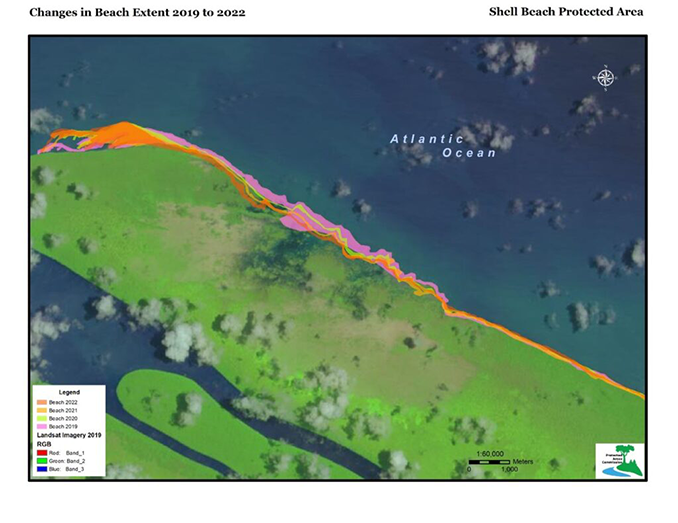AS I reflect on the damage, loss, and pain behind the hurricane for our Caribbean friends in Jamaica, I feel a deep sense of sadness. Structures and infrastructure that took years—possibly decades—for Jamaicans to build were gone or damaged within a few days. It all happened very quickly. Unfortunately, it can be very difficult to predict catastrophic environmental impacts until it’s too late. As I read the posts online, one Jamaican expressed, “No amount of preparations could’ve prepared us for this.” Many of these events are beyond our control and require measures beyond what we, as humans, are capable of. These thought-provoking realities are what inspired me to pen this week’s column on the concept of “creeping crises”. I came across the term recently in my studies and thought it appropriate to discuss it in light of the recent events in Jamaica, to raise further awareness of environmental impacts worldwide—not just in the Caribbean.

“Creeping crises” is perhaps self-explanatory in its name—slow, steady, subtle, quiet changes in our environment over a period of time. Initially, these challenges might seem insignificant and, as the name suggests, simply “creeping”. Until, of course, one day they are not, and they disrupt our entire lives and everything around us. It might sound like a cloud of gloomy realisations, but I urge you all to read until the end.
Let us consider our own homeland as a case study. I would often listen to stories about how our shorelines in Guyana decades ago were different—filled with more biodiversity than they are now. I also heard stories of the “creeping” impacts over time, where many people encountered slow yet increasing difficulties over the years due to our decreasing shoreline—from the loss of landmarks or infrastructure to a decline in certain activities on parts of the coast, such as swimming. There are even satellite images to prove that Guyana’s shorelines are receding, yet how often do we consider this an urgent issue? You see, creeping crises are not sudden like hurricanes or floods. They will not be announced on the television with a warning, but the changes in our environment happen slowly over years or decades. Nonetheless, they should be classed as a crisis due to their deadly impacts.
Due to the slowness of creeping crises, over time, the effects are normalised and classed as the “new normal”. We must remain vigilant to the world around us and the environmental impacts we might be facing—without even knowing it. From observing the yearly increase in temperature during the dry seasons to noting that the canals are not filled as they were before, or that there are now only three mangroves left instead of five on a specific part of the shoreline, it is important to remain vigilant and raise collective awareness. It is also important to reflect on our individual actions and how they affect the environment we live in.
I want to use this opportunity to call our relevant authorities to action: recognise that creeping crises are just as important as sudden crises, and further develop holistic policy and enforcement actions to reflect such. In the case study of the Aral Sea in Uzbekistan and Kazakhstan, we see that, over time, environmental degradation, increased land and water use, rising economic activity, and a lack of awareness of creeping crises led to the unfortunate creation of a “dead” sea. I challenge you all to watch a video or read an article about the Aral Sea and reflect on the slow yet deadly decline of a once-great sea to better understand creeping crises. I also urge Guyana, the Caribbean, and the rest of the world to heed these examples and learn from them to better adapt cultural beliefs to environmental justice.
I also want to highlight the official hurricane relief link from the Government of Jamaica: supportjamaica.gov.jm. Kindly donate, pledge to donate, or share the link with your friends and family as we join hands with the wider Caribbean community and the world to aid the safe rehabilitation of our fellow Jamaicans.



.jpg)








